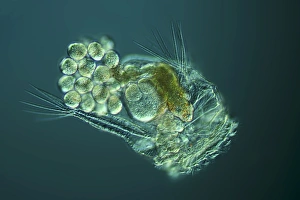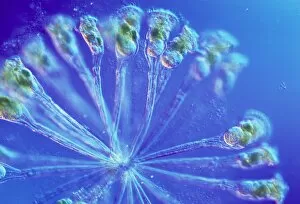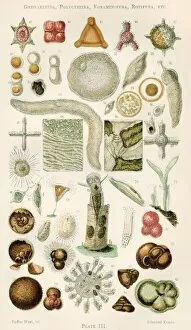Rotifers Collection
Rotifers, also known as Rotatoria, have fascinated scientists and researchers for centuries
All Professionally Made to Order for Quick Shipping
Rotifers, also known as Rotatoria, have fascinated scientists and researchers for centuries. Dating back to the late 19th century, these tiny creatures have been studied extensively through various forms of art and microscopy. In a stunning colour lithograph from 1899-1904, we catch a glimpse of the intricate beauty of rotifers. Their delicate bodies are adorned with cilia that create mesmerizing patterns as they move gracefully in their aquatic habitats. An engraving titled "A Rotifer Hunt" takes us on an adventure into the world of these microscopic organisms. Scientists meticulously search for these elusive creatures under their microscopes, capturing their essence in detailed illustrations. Under the lens of a light microscope, we witness the true magnificence of rotifers. In one image (C016 / 9550), we observe a single rotifer suspended in water, its translucent body revealing internal structures that make it so unique. Another captivating photograph (C016 / 8587) showcases a rotifer with eggs. These tiny spheres hold the promise of new life within them, highlighting the reproductive capabilities and resilience of this species. As we delve deeper into our exploration, more light micrographs reveal themselves – each showcasing different aspects of rotifer anatomy and behavior. From their distinct shapes to their vibrant colors and intricate feeding mechanisms - every detail is awe-inspiring. Clusters or colonies (as seen in multiple images) demonstrate how they are come together to form communities within their watery homes. These colonies serve not only as protection but also facilitate reproduction by providing optimal conditions for survival. The study has provided invaluable insights into biology and ecology over time. Despite being minuscule in size, they play significant roles in freshwater ecosystems as primary consumers while serving as indicators for environmental health due to their sensitivity to pollution levels. From ancient engravings to modern-day micrographs, our fascination with these remarkable creatures continues unabated.








